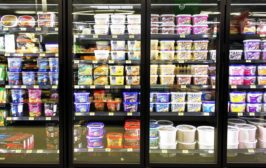Home » Keywords: » consumer shopping trends
Items Tagged with 'consumer shopping trends'
ARTICLES
Overall frozen food sales were +50.3% compared to 2019, the highest since mid-March stockpiling.
Read More
Refrigerated and Frozen Food Sales Rising Again Amid COVID-19 Pandemic
After a one-week decline, sales increase, while year-over-year numbers remain lofty due to residual effect of COVID-19 stockpiling in early March.
April 18, 2020
U.S. Enters 'Cool Down' Period for Refrigerated and Frozen Food Purchases as Stockpiling Decreases
Sales numbers down across the board, but still significantly higher compared to last year.
April 13, 2020
Frozen and Refrigerated Foods See Sky-High Spike in Sales Amid COVID-19 Pandemic
New data from IRI details consumer food and beverage stockpiling trends since March 1.
March 30, 2020
How the freezer aisle can adapt to Gen Z’s shopping behaviors
The food industry can expect to be influenced by the demands and desires of the young and opinionated Gen Z consumer.
January 17, 2020
Study reveals the secret life of a supermarket shopper
Wearable cameras enable researchers to track patterns such as when consumers shift focus from their shopping lists and begin looking at unplanned or unfamiliar product choices.
December 18, 2019
Study finds online supermarket shoppers register improved overall satisfaction, higher first-time use
This year’s research found Walmart (37%) surging ahead of Amazon (29%) in terms of shoppers indicating the provider used on their most recent online grocery shopping experience.
December 11, 2019
Report recaps 7 hot trends to watch for in 2020
As global economic factors, political implications and labor concerns gain steam, consumer behaviors are impacted and their sensibilities are more attuned to the value equation for dining occasions.
November 25, 2019
How to reinvigorate the breakfast niche
With the onset of functional ingredients, there has also been an increase in grazing, which is disrupting America’s cultural normalcy of three square meals per day.
November 22, 2019
Acosta reveals Top 20 CPG predictions for 2020
Some predictions include higher demand for pet products, integration of the in-store and online shopping experience and non-traditional channel growth.
November 18, 2019
Elevate your expertise in refrigerated and frozen foods with unparalleled insights and connections.
Get the latest industry updates tailored your way.
JOIN TODAY!Copyright ©2024. All Rights Reserved BNP Media.
Design, CMS, Hosting & Web Development :: ePublishing










